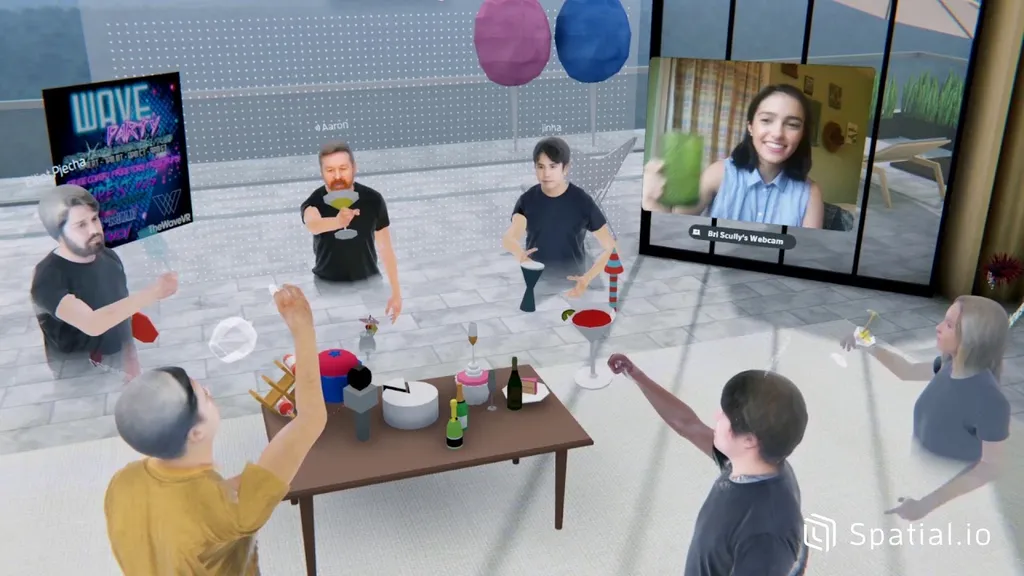Popular remote collaboration app Spatial is now free for everyone “for the coming months” in response to the ongoing global coronavirus pandemic.
Apps like Spatial are forging a new kind of remote work as compared to the 2D grids of webcam streams seen with services like Zoom, by moving to 3 dimensions. Almost any kind of file can be imported in this shared virtual workplace, including documents, models, images, and videos.
Spatial works on Oculus Quest, HoloLens, Magic Leap, and soon Nreal’s AR glasses.
Of course, VR is still too expensive and uncomfortable for many, and AR is still primitive while an order of magnitude more costly. So Spatial lets users join from a web link (like Zoom) as well as smartphones and tablets. Traditional platforms use the same user interface as XR for familiarity when switching between them.
Inside the virtual environment, users can annotate, draw, and write sticky notes. VR and AR users are at a disadvantage when it comes to text entry, but Spatial’s voice commands allow for searching and placing publicly available images and 3D models.
When you sign up to Spatial you’ll be asked to pose for a quick photo. From this single headshot, Spatial can generate a fairly realistic avatar for each person. Faint name tags are visible on heads, but the goal is to make reading them unnecessary.
Spatial is already used by successful companies like Mattel, Pfizer, Ford, Purina, and Qualcomm. The startup claims it has seen a “surge” of interest over the past few weeks as companies start to form long term remote working plans.
If you run a business searching for a remote work solution, there are options like Zoom and even the VR add-on for it from Spaces, but there’s a large gap between those services and what Spatial has to offer.






























